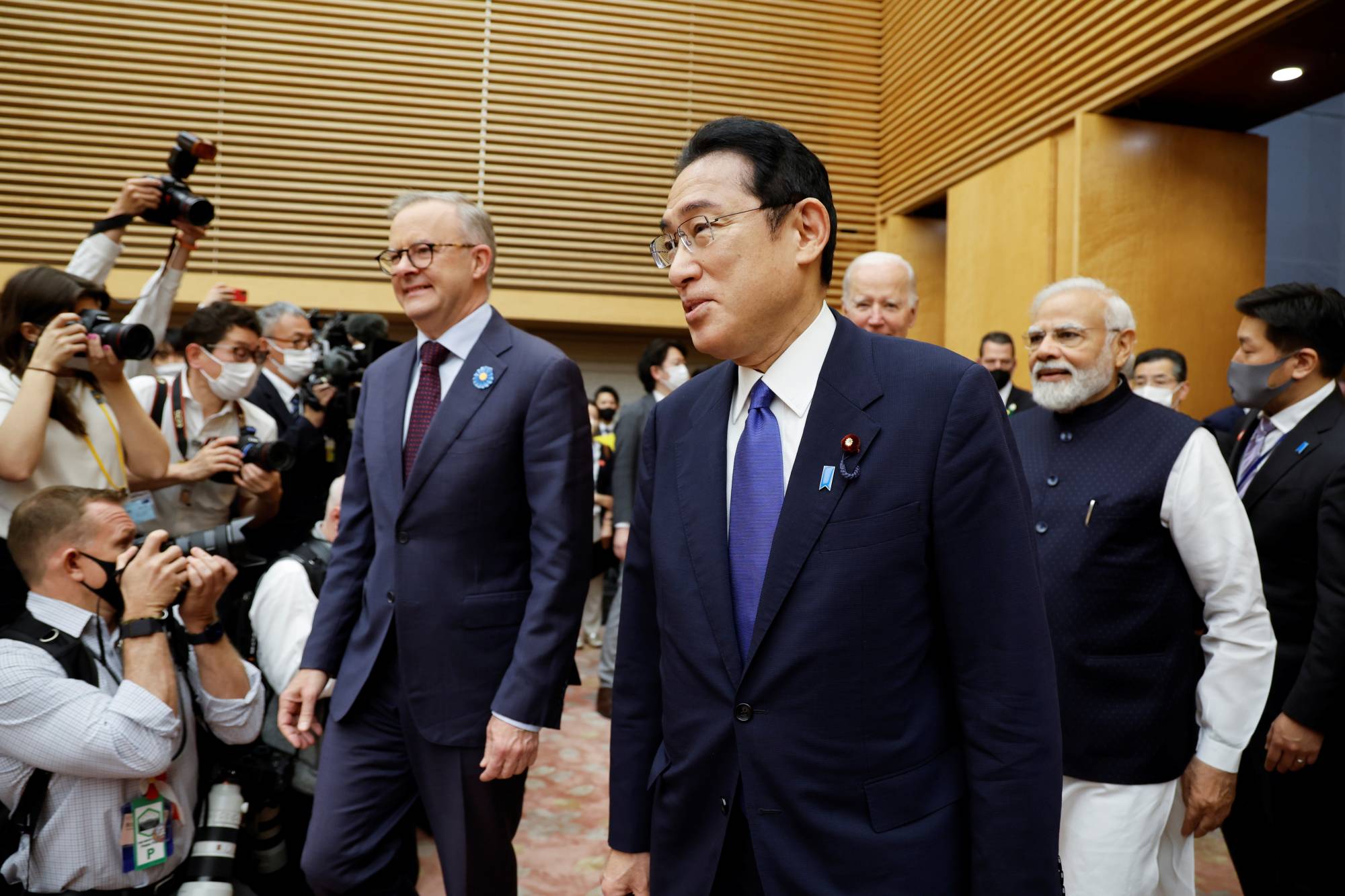Japan and Australia are expected to issue a new joint security declaration largely driven by growing Chinese regional assertiveness when Prime Minister Fumio Kishida travels to Perth this weekend for talks on stepping up defense, economic and energy cooperation.
The document, which is expected to be signed by Kishida and his Australian counterpart, Prime Minister Anthony Albanese, during a meeting Saturday, is set to underscore the importance of working toward achieving a "free and open Indo-Pacific."
Kishida is due to arrive in Perth on Friday for a three-day visit.


















With your current subscription plan you can comment on stories. However, before writing your first comment, please create a display name in the Profile section of your subscriber account page.